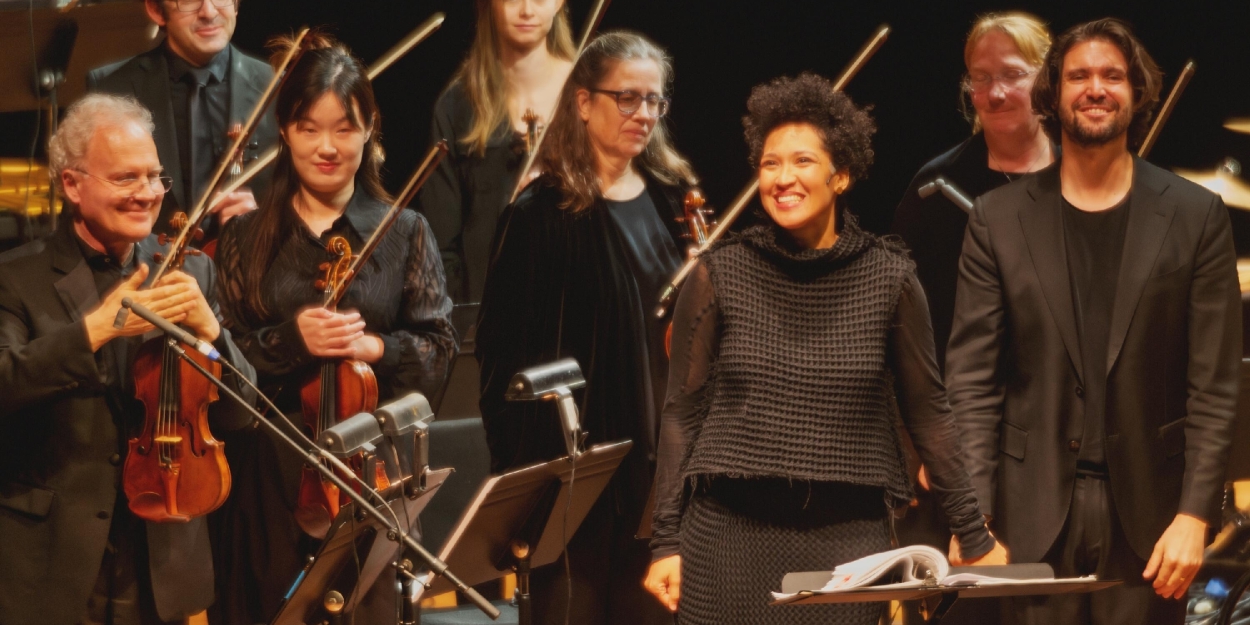Review: Julia Bullock’s PERSISTENT VOICE Is Stunning Combination of Past and Present
American Songbook Series Celebrates Black History Month at Lincoln Center’s Tully Hall

While opera-lovers wait eagerly for soprano Julia Bullock’s appearance in the latest John Adams lyric drama, ANTONY AND CLEOPATRA, at the Met in May, Bullock continues to tantalize us with some other parts of her repertoire: From the Baroque (her recent program with the Orchestra of the Age of Enlightenment) to this past Tuesday’s entry in Lincoln Center’s American Songbook series, HISTORY’S PERSISTENT VOICE, filled with songs and readings about enslavement and incarceration.
Originally done in a different form at the Met Museum in 2018 in conjunction with an exhibition of self-taught black artists, but new to Lincoln Center, HISTORY’S PERSISTENT VOICE was curated by GRAMMY-winner Bullock. It showcases the recent work of women composers--Jessie Montgomery, Tania León, Allison Loggins-Hull, Carolyn Yarnell, Pamela Z, and Cassie Kinoshi--who know how to absorb the messages of the source material as well as capture the singer’s rich, deep voice through their lyricism.
Additional collaborators include the GRAMMY-winning conductor Christian Reif (Bullock’s husband) with the New Haven Symphony Orchestra and the Tony Award-winning designer and immersive visual artist Hana S. Kim, who created a stunning environment for the performance.
One couldn’t imagine a singer known for her opera appearances presenting a program in a less operatic way. The power and thoughtfulness of Bullock’s voice took the life-affirming works--though born of violence, trauma and oppression--and held the audience in its thrall, turning what one could imagine as a grief-stricken tone instead to be uplifting.
The evening started off with a quintet of pieces conceived by composer Montgomery and the singer as a song cycle to honor their African-American heritage as well as the tradition of the Negro spiritual and other non-traditional styles. They were drawn from an historical anthology, Slave Songs of the United States (originally published by A. Simpson & Co., New York, 1867), that was released after the Civil War. (It was conceived by educators and musicologists from 136 lyrics and melodies gathered from newly freed communities of the formerly enslaved.)
Among the five works, which seemed a natural and easy fit for Bullock, are a funeral song, “Lay dis Body Down,” which may have come from the region around South Carolina, using an improvised style that is quite unique. I was also drawn to “My Father, How Long?” which emerged from a jail in Georgetown, S.C. and is accompanied by percussive sounds evoking the chain gang.
According to the composer, her setting of another of the pieces, “I Want to Go Home,” in a hybrid Gregorian chant/spiritual style was inspired by the simplicity of the way it was transcribed in that 1867 volume, as a seven-note melody without an indicated rhythm.
I can’t think of any one of the songs included in the program I would have knowingly missed, though there were some standouts for me: “Mama’s Little Precious Thing,” which was inspired by words of Louise Williams, granddaughter of quilter Willie “Ma Willie” Abrams, seemed to have special meaning to the singer as the mother of a small child, thus pushing it to a new level. “blue skies, bluer seas” was written by composer Kinoshi when Bullock did the program in London with the Philharmonia Orchestra.
(The words are inspired by poet Una Marson, whose work also supplied some of the readings that were interspersed with the musical performances. Other notable readings were from Craig Anthony Ross, a death-row inmate; Sue Willie Seltzer, visual artist; and Nellie Mae Rowe, visual artist.)
I was also taken with composer Pamela Z’s “Quilt,” which found its inspiration in the Alabama quilters of Gee’s Bend and is based on a film about them, “While I Yet Live,” directed by Maris Curran.
The evening ended with composer Leon’s modernist “Green Pastures”; the title was based on “Green Pastures: The Birds That Didn’t Learn How to Fly” by Thornton Dial, which is in the collection of the High Museum of Art. Bullock and Montgomery interviewed Dial and edited the text from it.
Bullock is a smart performer who follows the “less is more” philosophy and listens to the cues that the music itself gives to her. The result is fascinating to hear and to watch as she performs the songs and readings.
Caption: Soprano Julia Bullock (center) and conductor Christian Reif (far right)
Photo: Lawrence Sumulong/Lincoln Center for the Performing Arts
Reader Reviews
Videos

